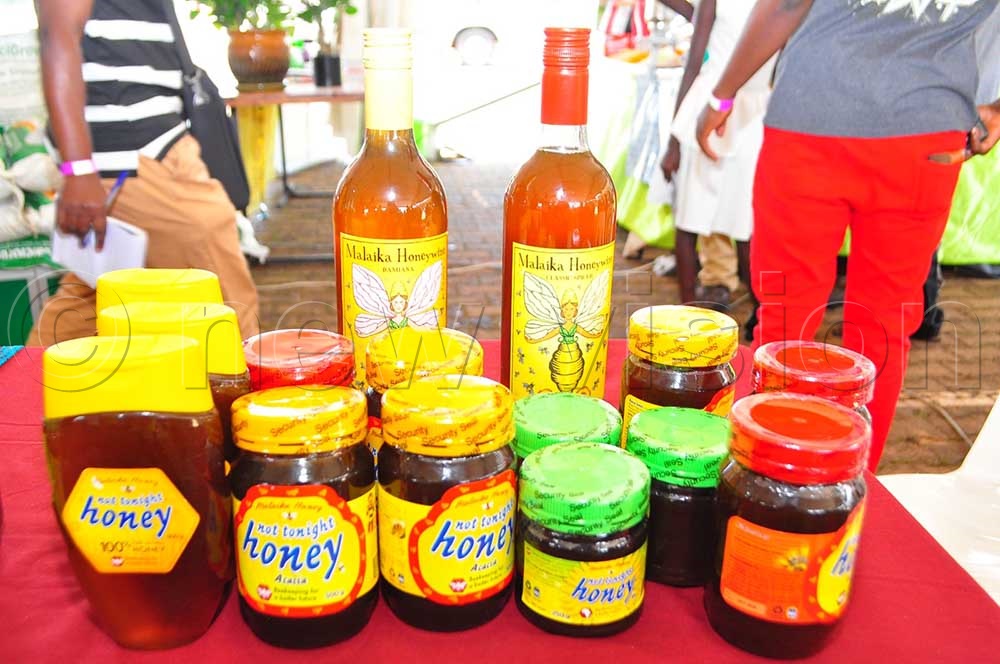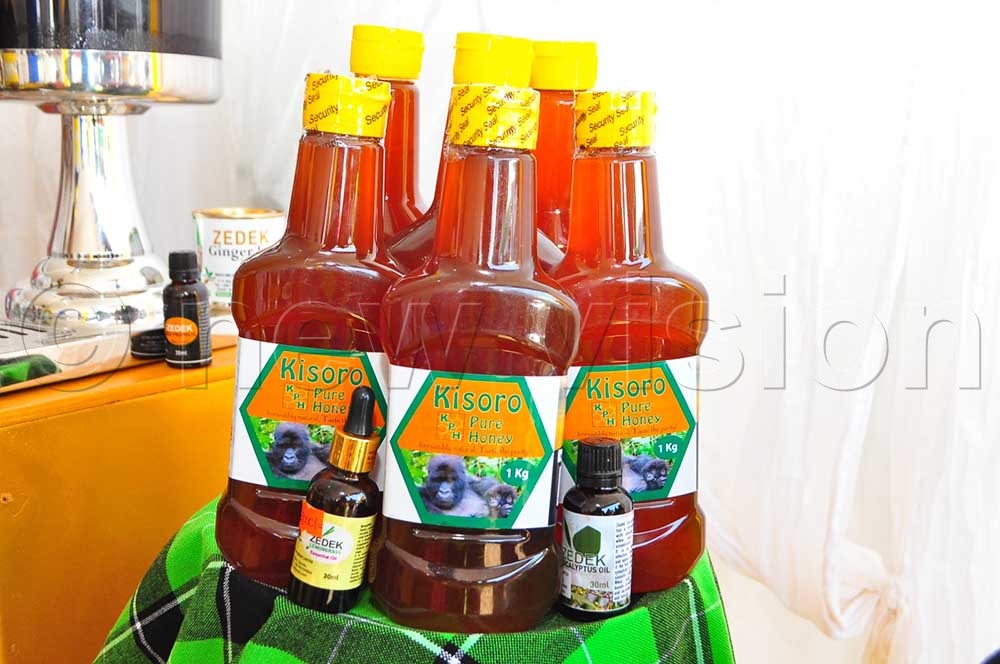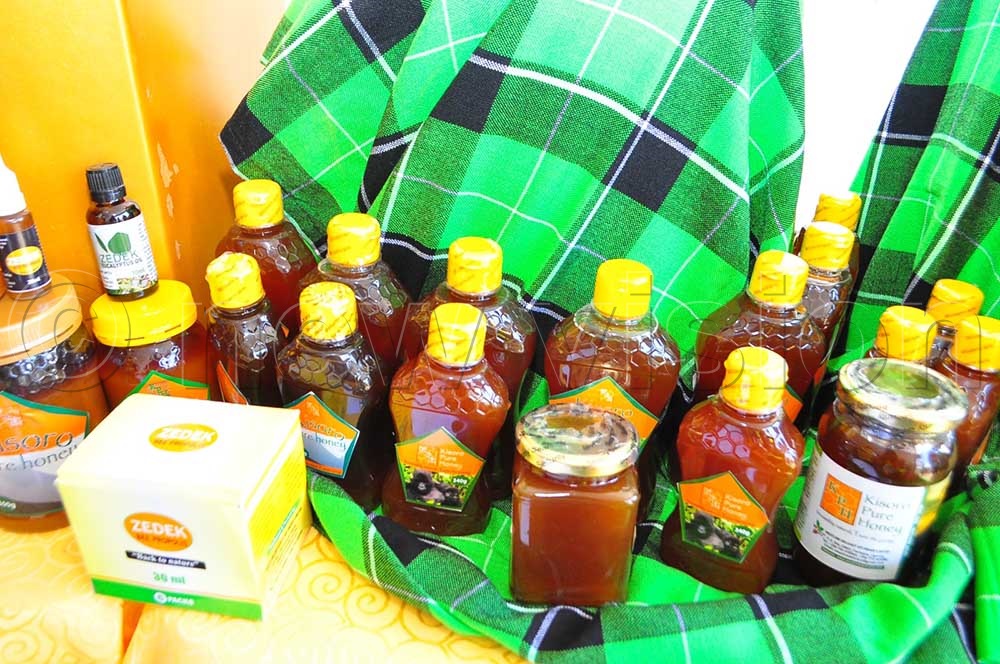By Prossy Nandudu
Farmers have been asked to feed their bees, just like it is done for any other animal, in order to harvest honey continuously. Failure to provide alternative feeds will cause the bees to turn to the honey they produce for food, leaving nothing for the farmer.
Alice Kangave, the director of Bee Centre made the call while facilitating the bee-keeping training that took place at the Harvest Money expo at Kololo Ceremonial Grounds on Satuday, Friday 11.
She said farmers can feed bees on cassava or maize flour, mixed with icing sugar. One can also use sugar mixed with one liter of water in addition to all kinds of fruit like mangoes and pineapples because they are sweet.
According to Kangave, the feeding is ideal during the rainy season, because bees do not fly during the wet season. She was responding to a question from a participant who wanted to know why he does not harvest much honey during the rainy season. Other concerns raised by farmers include why honey has different colours, why it crystalises, how to tell quality honey from the adulterated one, the types of bee hives to use, in addition to costs for those venturing into bee-keeping for the first time.

While buying honey, one can tell genuine from the adulterated one by turning the bottle upside down and observing whether the honey is threadlike in motion. This, she said, should stay intact until the bottle containing the honey is turned to its normal position. To harvest good honey, it should be well-sealed in the combs.
“You harvest the comb, that means the moisture content stays at the bottom. After scooping the honey out, either float it in a bucket and the honey will drip down. Honey squeezers can be imported, but locally-made ones can be purchased from faming stalls. A strainer, or some properly-cleaned nets are a good option.”
However, she cautioned against using mosquito nets to squeeze honey from the combs.
Choice of hives
During the session, Stephen Kunihira, a bee-farming expert advised farmers looking for hives to consider both local and modern ones, adding that each has its own advantages and disadvantages. Examples of modern hives include Kenya Top Bar (KTB) that goes for sh85,000 while the Langstroth goes for sh150,000.
Value added products from bees include honey, bee venom, bee wax, lip balm, propolis which is medicinal, and many others.








